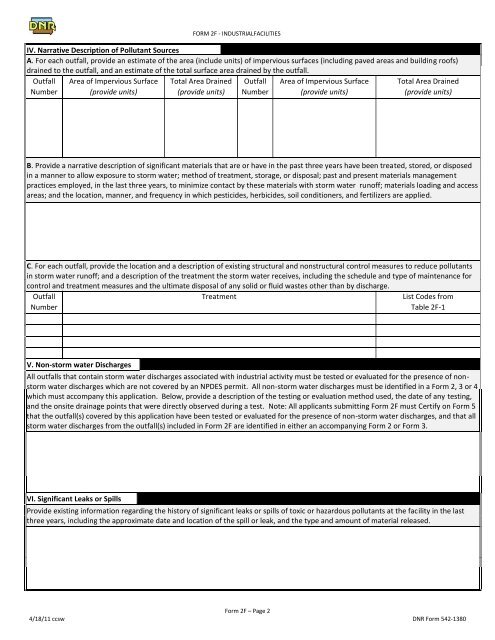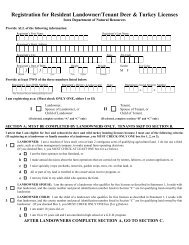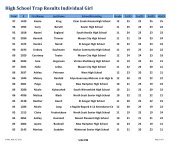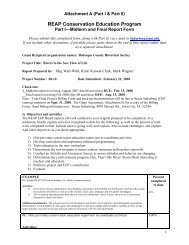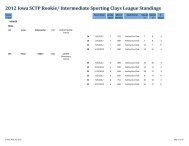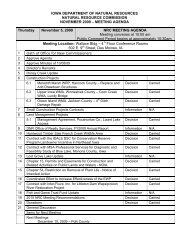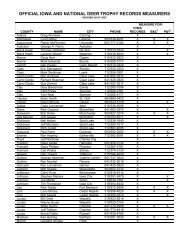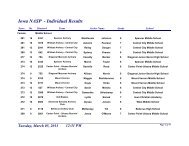iowa department of natural resources npdes permit application
iowa department of natural resources npdes permit application
iowa department of natural resources npdes permit application
You also want an ePaper? Increase the reach of your titles
YUMPU automatically turns print PDFs into web optimized ePapers that Google loves.
FORM 2F - INDUSTRIALFACILITIES<br />
IV. Narrative Description <strong>of</strong> Pollutant Sources<br />
A. For each outfall, provide an estimate <strong>of</strong> the area (include units) <strong>of</strong> impervious surfaces (including paved areas and building ro<strong>of</strong>s)<br />
drained to the outfall, and an estimate <strong>of</strong> the total surface area drained by the outfall.<br />
Outfall Area <strong>of</strong> Impervious Surface Total Area Drained Outfall Area <strong>of</strong> Impervious Surface Total Area Drained<br />
Number (provide units) (provide units) Number (provide units) (provide units)<br />
B. Provide a narrative description <strong>of</strong> significant materials that are or have in the past three years have been treated, stored, or disposed<br />
in a manner to allow exposure to storm water; method <strong>of</strong> treatment, storage, or disposal; past and present materials management<br />
practices employed, in the last three years, to minimize contact by these materials with storm water run<strong>of</strong>f; materials loading and access<br />
areas; and the location, manner, and frequency in which pesticides, herbicides, soil conditioners, and fertilizers are applied.<br />
C. For each outfall, provide the location and a description <strong>of</strong> existing structural and nonstructural control measures to reduce pollutants<br />
in storm water run<strong>of</strong>f; and a description <strong>of</strong> the treatment the storm water receives, including the schedule and type <strong>of</strong> maintenance for<br />
control and treatment measures and the ultimate disposal <strong>of</strong> any solid or fluid wastes other than by discharge.<br />
Outfall Treatment List Codes from<br />
Number Table 2F-1<br />
V. Non-storm water Discharges<br />
All outfalls that contain storm water discharges associated with industrial activity must be tested or evaluated for the presence <strong>of</strong> nonstorm<br />
water discharges which are not covered by an NPDES <strong>permit</strong>. All non-storm water discharges must be identified in a Form 2, 3 or 4<br />
which must accompany this <strong>application</strong>. Below, provide a description <strong>of</strong> the testing or evaluation method used, the date <strong>of</strong> any testing,<br />
and the onsite drainage points that were directly observed during a test. Note: All applicants submitting Form 2F must Certify on Form 5<br />
that the outfall(s) covered by this <strong>application</strong> have been tested or evaluated for the presence <strong>of</strong> non-storm water discharges, and that all<br />
storm water discharges from the outfall(s) included in Form 2F are identified in either an accompanying Form 2 or Form 3.<br />
VI. Significant Leaks or Spills<br />
Provide existing information regarding the history <strong>of</strong> significant leaks or spills <strong>of</strong> toxic or hazardous pollutants at the facility in the last<br />
three years, including the approximate date and location <strong>of</strong> the spill or leak, and the type and amount <strong>of</strong> material released.<br />
Form 2F – Page 2<br />
4/18/11 ccsw DNR Form 542-1380


